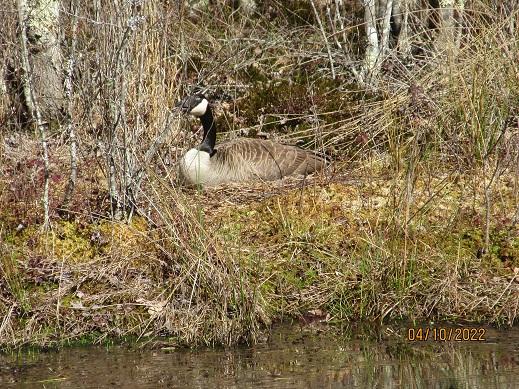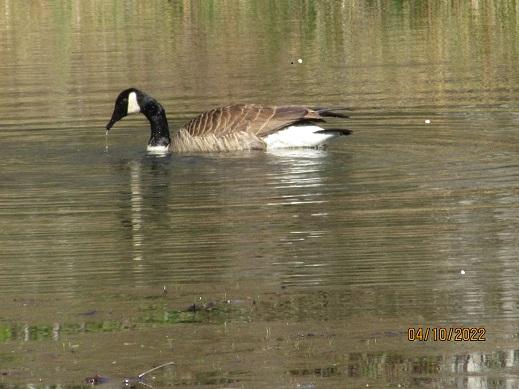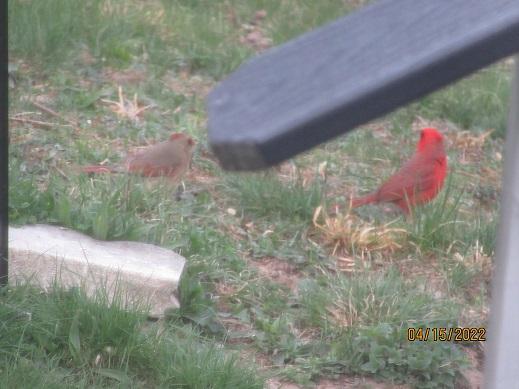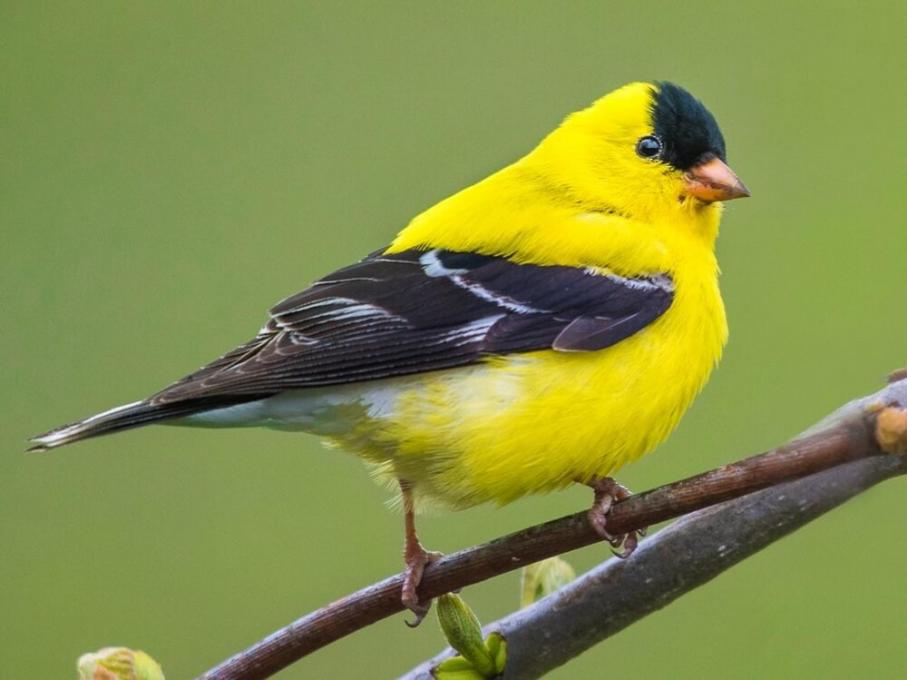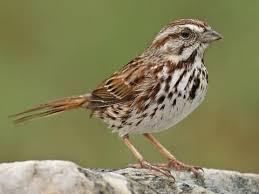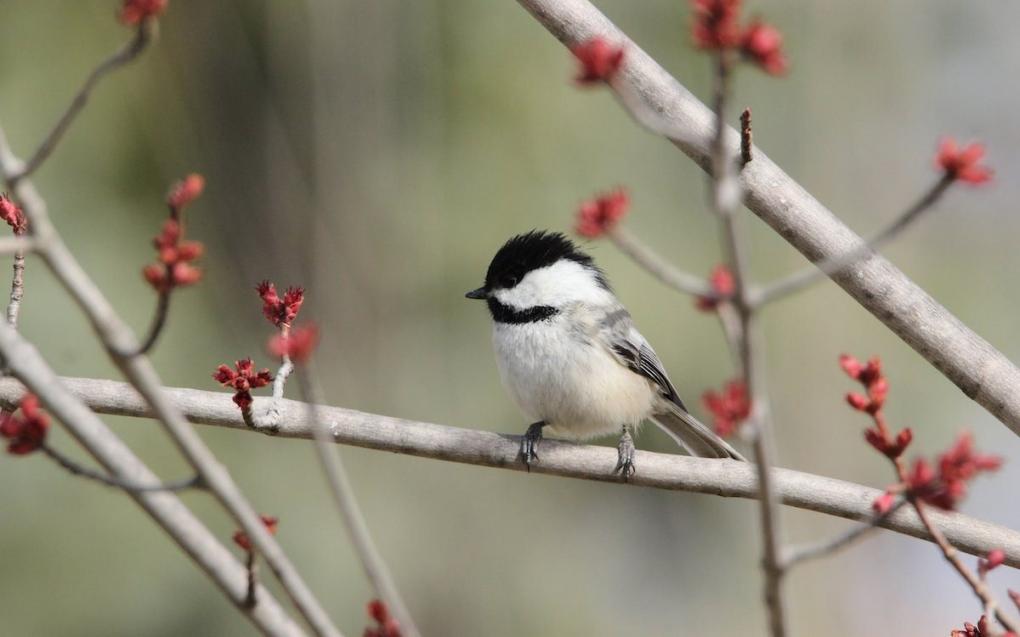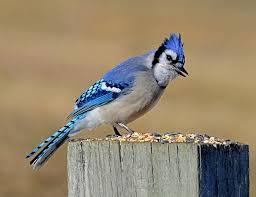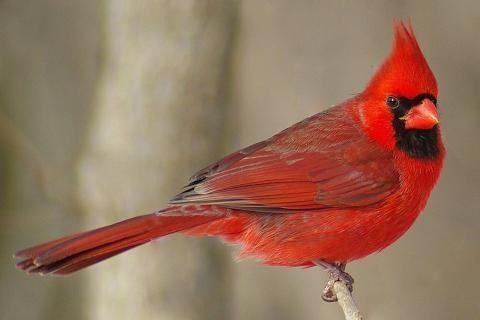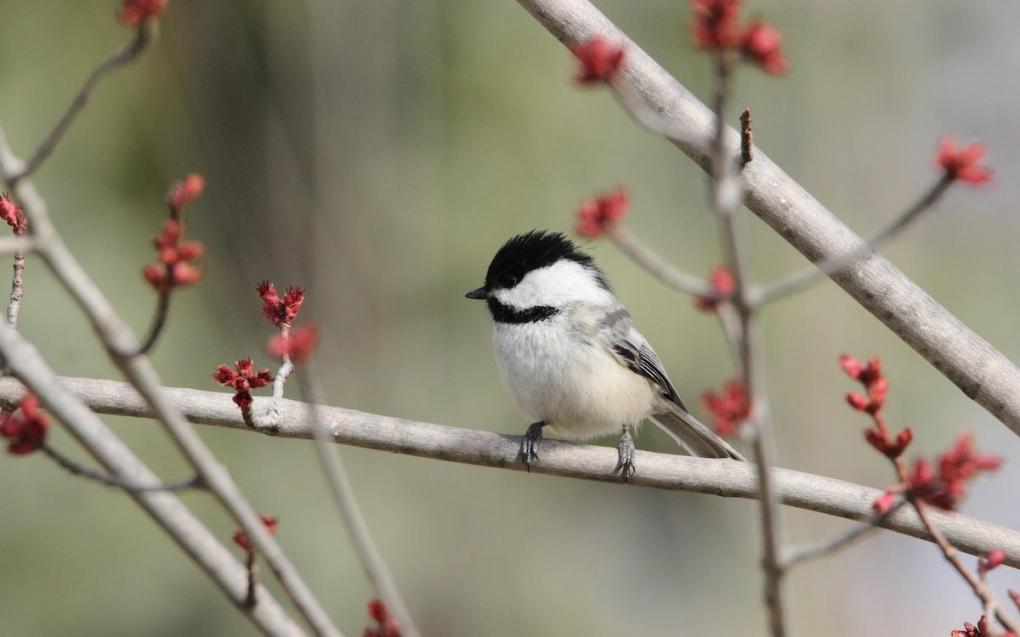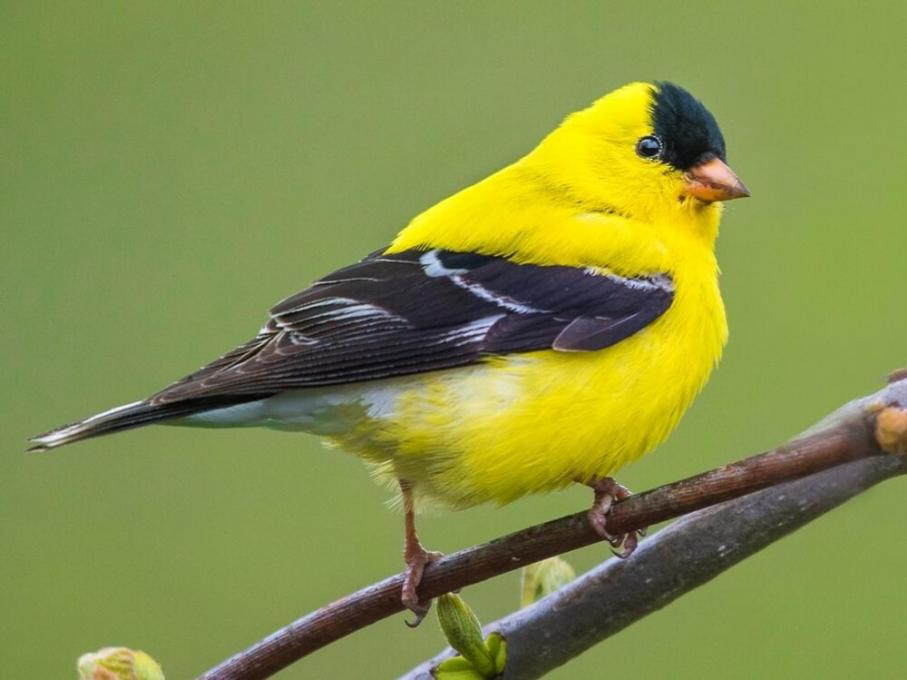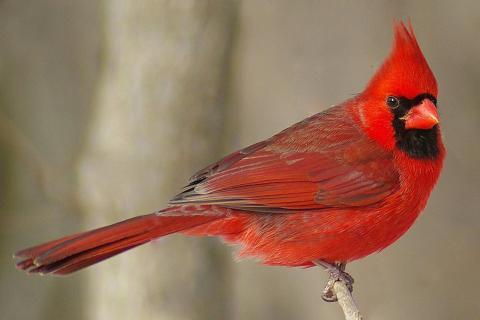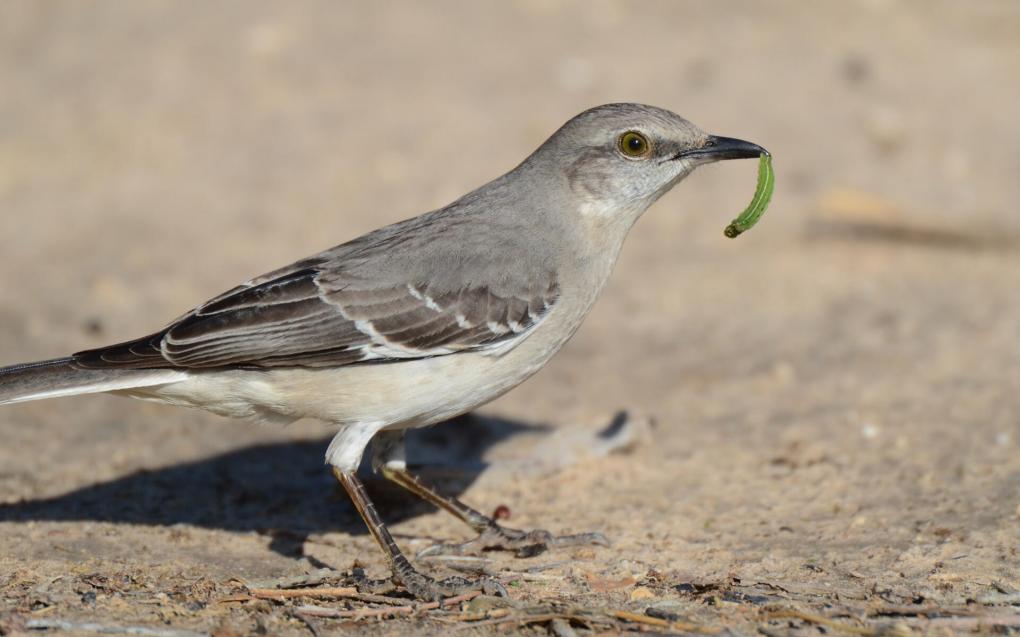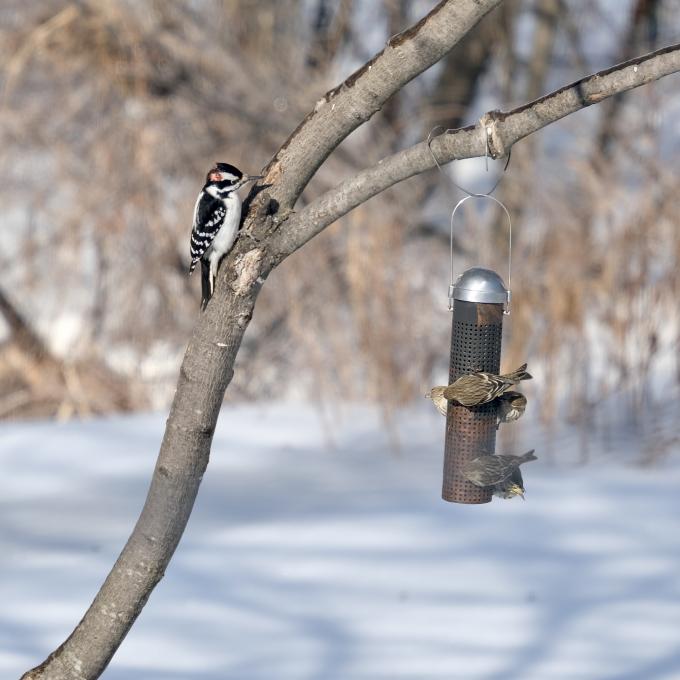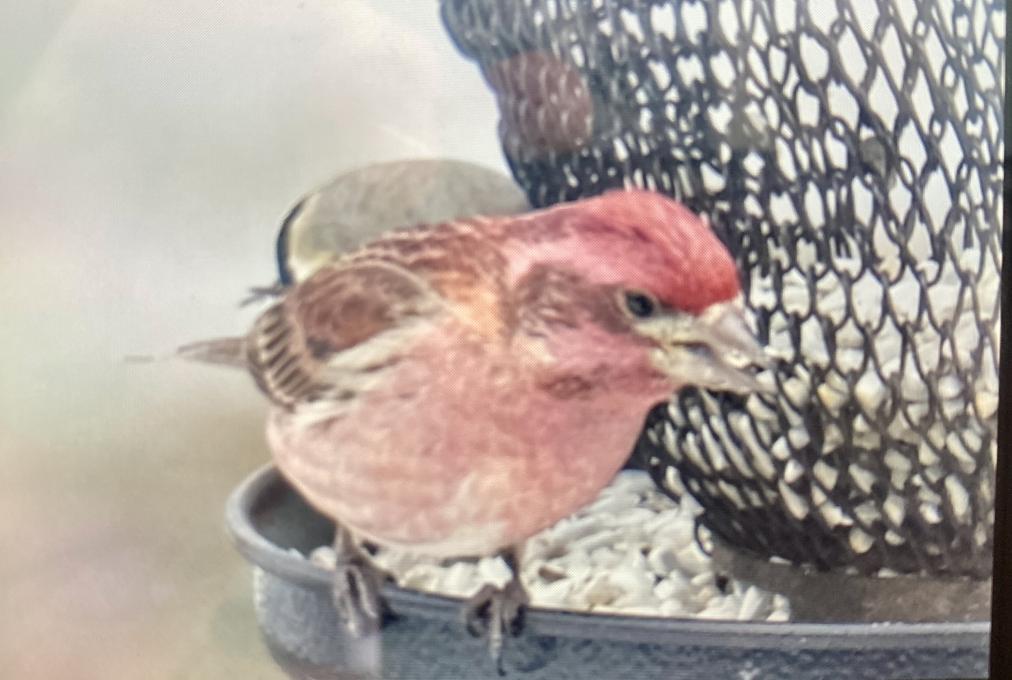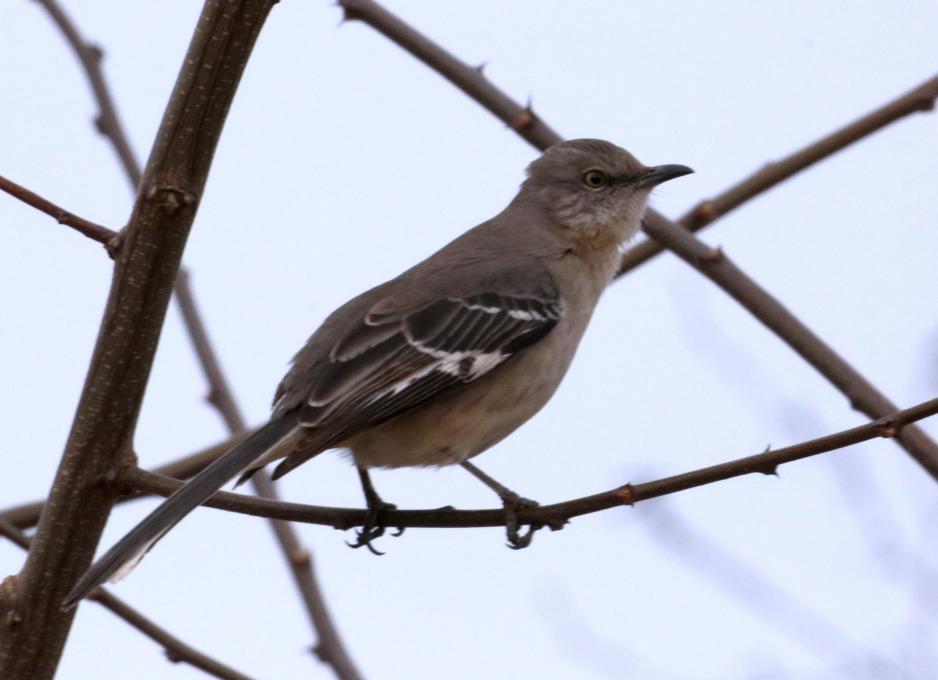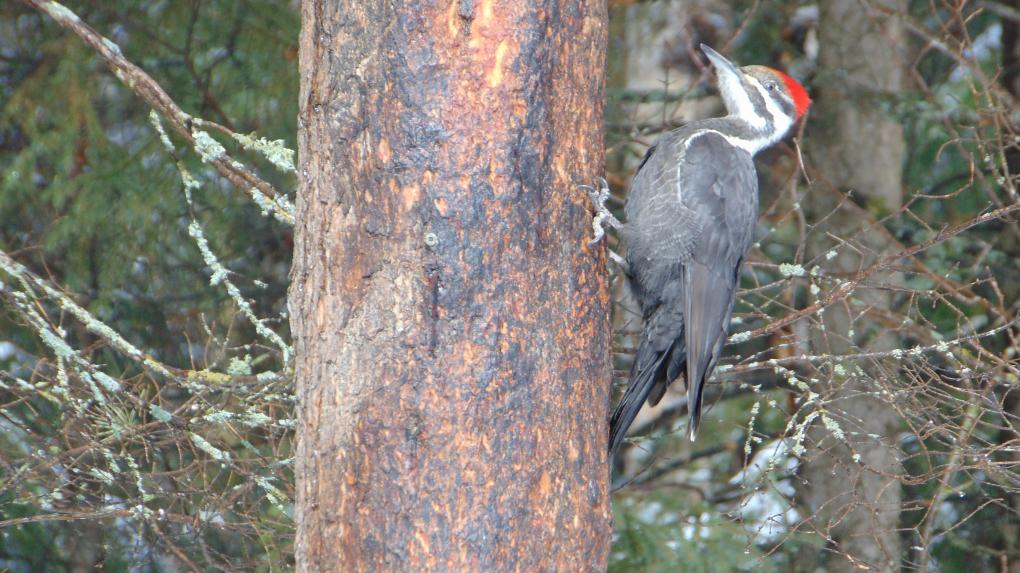The Cornell Lab Bird Academy › Discussion Groups › Joy of Birdwatching › Activities: Bird ID Practice
-
By Shape - House Finch vs Downy Woodpecker. (House Finch) Small sparrow-like bird that spends the day at the feeders and happily chases away other birds. Downy Woodpecker is larger and hangs off the suet feeder. He visits only intermittently.
By Color - Red - Cardinal is red all over. House Finch is raspberry on head and back. Common Flicker has spotted chest but a bit of red on the back of the head.
By Food finding behaviors - House Finches eat seeds from the feeder almost continuously. Downy Woodpeckers eat suet from the suet feeders intermittently. Mourning doves eat seeds from the ground under the feeders for most of the day.
Favorite Bird - It must be the Northern Cardinal because I gasp every time I see one. Cardinals are bigger than a sparrow but smaller than a crow. The Cardinal might be just a little bit smaller than the Blue Jay that visits once in a while. The Male Cardinal is really red all over. The Female is a lighter shade.....almost a salmon to dusty orange. They are shyer than the chickadees or the finches and fly away quickly if there is any movement near the feeders. I'm pretty sure I have a pair living in my yard which has a lot of tree cover because I can hear the cheer, cheer, cheer high in the trees when I am working in the yard. -
One of my favorite birds is the Dark-eyed Junco. It comes around this time of year. It’s a medium sized sparrow with a small head and slightly chubby. They are a dark grey almost silvery color with a white underbelly. They usually eat off the ground. I saw this one in my backyard. (Sorry it’s not a great photo but I didn’t want to scare it by getting close.)

-
I observed with my Grandmother two birds. One was a Great Egret and the other one was a Northern Cardinal.
Differences were: Great egret - long neck, white color, bill shaped like a spear to eat fish, large bird
Northern Cardinal - short neck, red, bill shaped like a triangle to eat seeds, small to med size bird.
-
Activity #4: We have these beautiful Red-shouldered Hawks in our area. I've always wondered what they are. I figured they were hawks of some sort, but did not know what type. Now that I've starting my birdwatching hobby, I've discovered what type of hawk. My Merlin ID app picked up the sound yesterday morning and I started looking around for it. I found the hawk sitting at the top of the tallest tree in our backyard. It was perched on a dead branch at the very top. When I see them in various places, they are usually perched at the top of a tree on a branch with no leaves. Later in the day after I saw that one in my backyard, I saw one flying and was able to distinguish it from the black vultures by the lighter color with underneath. The three things that helped me identify this bird are sound, color, and behavior.
-


 Activity 1. My two birds that I have been seeing in the backyard lately are the Black capped chickadee and the white crown sparrow. The chickadee is more of a plump bird as the sparrow looks like it is standing tall with more of a neck then the chickadee.
Activity 1. My two birds that I have been seeing in the backyard lately are the Black capped chickadee and the white crown sparrow. The chickadee is more of a plump bird as the sparrow looks like it is standing tall with more of a neck then the chickadee. -
they're so cute! some of my favorite birds. they're simple but are really adorable. those pictures are really good too!
-
-
Notes below taken to support a sighting of Wilson’s Phalarope at the Reifel Bird Sanctuary in Great Vancouver, Canada, a species that is uncommon in this part of the world:
Three individuals were observed in the West Field of Reifel Bird Sanctuary, from a position along the West of Seaward Dyke. The birds were wading in the very shallow water along the southern edge of the northernmost of the three sections of the West Field. Athlon Midas 10x50 binoculars were used for observation, from a distance of approximately 25 m. All three individuals were approximately the size of an adult crow, had grey heads with a band of black running across the eyes, and white belly and flank. One of the three individuals had a marked smudge of brown on the neck, the other two less so. Bills were long, slender, and straight. All three individuals were periodically engaged in what appeared to be feeding, very purposeful walking and energetic and earnest moving of the bill to where the prey was and very rapid thrusting of the bill into the very shallow water. Merlin Bird ID indicated Wilson’s Phalarope is uncommon in the area the observation occurred and so a great deal of time was spent comparing body shape and coloring with other possible species: (i) Greater Yellowlegs and Lesser Yellowlegs – the three observed birds had black, not yellow, legs; (ii) Dunlin – the necks of the three observed birds were longer than the rather stubby neck of the Dunlin (as indicated in the Merlin Bird ID photos); (iii) Virginia Rail – the bills of the three observed birds were black and not orange; (iv) Marbled Godwit – the bills of the three observed birds were shorter in proportion to body length than for the Marbled Godwit (as indicated in the Merlin Bird ID photos); and (v) Whimbrel – the bills of the three observed birds were straighter than for the Whimbrel (as indicated in the Merlin Bird ID). The observations and identification were confirmed with two other birders and on the weekly species list of sanctuary. -

Tufted Titmouse: This tiny little bird flits around and rarely stays still. It hangs out primarily in the trees, with regular visits to a feeder for a seed. It will flit back several times a day. It has a beautiful dark gray crest and a white bib shading to pale yellow. Its gray wings taper to a darker gray wing edge. It has a very distinct call. I would swear the body must be primarily lungs! This is a loud little bird! Occasionally, it will perch at the top of the feeder while fluttering its wings and calling very loudly. From what I understand, that may either be a mating ritual or a juvenile wanting its parents. No matter, it's adorable! -
Activity 4 - Black, crow size is distinctive, foraging on the ground and roosting in trees, very distinctive vocalizations. One of my favorite birds is the American Crow. We walk daily and have a cadre of birds that join us. I always have mixed nuts and peanuts for them and they recognize us immediately. Over time they have become very brave and vocal, not aggressive but like us to know they are there. I choose to believe they are saying thanks for the goodies. Corvids or very smart. When I gesture that I am out of nuts. They seem to know and go about their business.
-
During the past Project Feeder Watch season, I realized that I was able to distinguish the Mourning Dove even at a distance before I could get my binoculars for a positive ID. I knew when I saw that long pointed tail and that small head and slender neck, that I was looking at a Mourning Dove. During the same time period, I also learned that I could easily tell when I saw a nut hatch (either red or white breasted). They have a distinctive “pointed” sort of shape and of course can go up and down (head first) on a tree!
-
Activity #4: I love pigeons and since I live in Chicago, I get to see a lot of them. I find them beuatiful and resilient, even though many people in the city do not care for them and the mess they can leave behind. Size & Shape: Smaller than a crow. Plump with short legs. Color Pattern & Markings: The pigeons I currently see are light grey in color with black wing bars. My favorite feature is the iridescent green neck. Behavior: They peck around on the streets and parking lots foraging for food, mostly leftover from people. They roost on top of buildings and wires. Habitat: Across the globe, even in urban areas. Cliffs and caves naturally. Common in cities and farmlands. Range: The rock pigeon is found from southern Canada and Alaska south through the United States, Mexico, and Central America. The rock pigeon is native to Europe, North Africa, and southwestern Asia. Sounds: Prolonged cooing.
-
I’ve had family members contacting me lately to help them identify birds out at their cabin. With what I have learned so far, I have been able to successfully identify the Rose-Breasted Grosbeak, Purple Finch and the Baltimore Oriole. Such fun being able to help and use my new knowledge!
-
Activity 1: I tried to go for birds that aren't completely obvious like a Northern Cardinal or Canadian Goose. I've noticed I can tell the Common Grackle https://www.allaboutbirds.org/guide/Common_Grackle/overview , the European Starling https://www.allaboutbirds.org/guide/European_Starling/overview , and the Brown-headed Cowbird https://www.allaboutbirds.org/guide/Brown-headed_Cowbird/overview apart just by their shape. This is a recent discovery I made while driving through an area that has all three of these birds. I was able to identify them rapidly and (mostly) pay attention to driving.
Activity 2: Coincidentally, all three of the birds above have similar colors and work for activity 2. All three are blackbirds with iridescent glossy effects on their feathers. The brown-headed cowbird lacks these colors and effects on its brown head and its iridescence is more subdued than the other two birds. The Common Grackle seems to have large regions of color/iridescence while the European Starling's colors are more mixed and nearly seem to be displayed feather by feather.
Activity 3: Today three of the birds I saw obviously looking for food were the Blue Jay, the Green Heron, and the Blue-gray Gnatcatcher. The Blue Jay was going back and forth from low tree branches to the grass near a trail. Whatever it was finding, a bug I assume, it would pick up, tilt its head back, and quickly gobble down the snack.
The Green Heron was quietly and slowly searching through the tall reeds lining a shallow pond. I didn't observe him make any catches.
Finally, I saw what I believe to be a female or immature Blue-gray Gnatcather. It was darting around, back and forth across a path from tree to tree. Constantly searching, something caught her eye. She hopped up to what appeared to be part of a branch. Suddenly she snapped it up and it began to thrash. It was some kind of insect larva. I have photos of this event:

 Activity 4: Right now, my favorite bird is the Pied-Billed Grebe. It's a cute bird that at first appearance may be confused for a small duck. Closer inspection shows it to have a shorter and sharper bill with a black ring (in season) vertically crossing both the upper and lower bills. The ones I've seen this year were reddish-brown and their bills were light gray. They have a long neck like a duck but a very understated pointy tail. Unlike ducks, they look very wet when returning from a dive. Unlike most ducks, they completely submerge and stay submerged for some time. They dive for fish and other aquatic animals. I have not been able to hear them make a sound yet. This is the first year I even knew they existed but I am now a very big fan.
Activity 4: Right now, my favorite bird is the Pied-Billed Grebe. It's a cute bird that at first appearance may be confused for a small duck. Closer inspection shows it to have a shorter and sharper bill with a black ring (in season) vertically crossing both the upper and lower bills. The ones I've seen this year were reddish-brown and their bills were light gray. They have a long neck like a duck but a very understated pointy tail. Unlike ducks, they look very wet when returning from a dive. Unlike most ducks, they completely submerge and stay submerged for some time. They dive for fish and other aquatic animals. I have not been able to hear them make a sound yet. This is the first year I even knew they existed but I am now a very big fan. -
Activity 1: It is easy to tell a hummingbird which comes to our hummingbird feeder, red-tailed hawk which hunts occasionally in our field, and blue heron by shape, all of which visit our property.
Activity 2: different shades of blue, birds on our property
1. bluebird
2. blue jay
3. blue heron
Activity 3: Blue heron search for food in the pond for frogs and small fish in our pond. Goldfinch search for seeds in yard. The cardinals keep returning to bird feeder area searching for seed droppings. The black vulture sailed overhead searching for road kill.
Activity 4: The adult Canada geese have a long neck and big body. The neck is black, with a white band up its cheek. The feathers are brown, with white tail feathers. The pair was in a pond in a park in the National Forest. One was on a nest and the other was paddling nearby.


-
Activity 1:
Evening Grosbeak- A large finch with a pale short thick bill, a dark head, yellow belly and brow, black wings with white patch and a black short notch tail.
Pine Grosbeak- A large pink finch with two white wing bars and pale grey highlights, and a black stubby bill.
Activity 2:
Black-capped Chickadee- Tiny, plump, grey bird, black cap head and throat, white cheek and belly, short, stumpy black bill.
Dark-eyed Junco- Grey all over sparrow with white belly, pinkish bills and white outer tail feathers
White-breasted Nuthatch- large grey nuthatch, white face, black cap, light grey under parts, black and grey wing bars, long, narrow black beak
Activity 3:
Common Redpoll- feeders
Blue Jays- feeders and ground beneath feeders
Black-eyed Junco- ground beneath feeders
Activity 4:
One of my favorite birds is the Northern Hawk Owl. I am always so amazed when he flies over my car to say hi on my way to our Cabin. He is a medium sized owl with a long tail. Brown overall with white spotting on the belly and wings.
-
We spent the morning watching a Greater Blue herons and double breasted cormorants nesting in a rookery of about 50 nests. It was on an island in Stanley Lake in Westminster/Arvada Colorado. They do have nesting Bald Eagles nearby. We have seen them soaring but haven't located a nest
-
One of my favorite birds is the gold finch. He comes to a thistle feeder, especially spring, summer and fall. Or at least he is bright yellow with black on his wings during those seasons. He is about the size of a sparrow and waits in the trees before hitting the feeder. He is skittish and flies away if I get too close.

-
We have a feeder in the yard. The song sparrow perches on the feeder to eat sunflower seeds and spits a lot out and the blue jay pecks the ground under the feeder. The chickadee flies to a feeder perch, grabs a seed and flies (swooping up and down) to a tree branch nearby to eat the seed.



-
2. I chose a cardinal, a chickadee and a goldfinch—all have black on them, but the cardinal’s is a mask, the chickadee’s a cap and the gold finch has black on its wings



-


-
An easy comparison of birds by shape would be a cardinal versus a mocking bird. The cardinal’s crest is a dead give away.
-
A Downy Woodpecker has the smaller beak compared to the Hairy Woodpecker, also I noticed it going up the tree looking for insects.

-
- Thanks to Merlin photo ID, I was able to find out this was a male Purple Finch

- Thanks to Merlin photo ID, I was able to find out this was a male Purple Finch
-
Activity 1: Hairy woodpecker & mountain chickadee - not hard to differentiate!
Activity 2: Mountain chickadee (gray, white & black with white eyebrow), black capped chickadee (gray, white & black with full black cap & bib), hairy woodpecker (white & black with spotting)
Activity 3: Crows (walking along fences/ground), mountain chickadee (flitting around aspen branches), black capped chickadee (flitting around aspen branches)
Activity 4: Hairy woodpecker (approximately smallish robin sized, spotted black & white, clinging to/picking at tree trunks, area with old growth aspens, pines, & spruces, single "peek" call) -

<p style="text-align: left;">Activity 1: Look for two birds you can tell apart by shape.</p>
<p style="text-align: left;">Northern Cardinal.
American Robin.</p>
<p style="text-align: left;">Activity 2: Look for three different birds that have the same colour but on different parts of their body. Red.</p>
<p style="text-align: left;">
Back of the head. Male Downy Woodpecker.
Complete body. Male Northern Cardinal.
Chevron shaped red feathers on the nape of the neck. Northern Flicker.</p>
<p style="text-align: left;">Activity 3: Searching for food.</p>
<p style="text-align: left;">
Chickadee. Takes a seed from the feeder then flies into the burning bush or forsythia to eat it completely before returning to the feeder for another seed.
White-breasted Nuthatch. Comes to the feeder, takes a seed and flies over to the white oak or the red oak to store it or eat it.
White-throated Sparrow forages under the feeder and double scratches through the seeds on the ground. It never flies up to perch and eat on the feeder.</p>
<p style="text-align: left;">Activity 4: Describe your favourite bird.</p>
<p style="text-align: left;">The Northern Cardinal is too easy to identify, but it is a favourite to watch, especially when the male feeds the female. So I will describe a bird I found on a walk in the park that I had never seen before.The park is located on the shore of a lake. It was late in the day, about 5:30 and the sun was going down so the light wasn’t the best. A bird flew into a tree ahead. It had a long tail, a long pointy bill, 2 wing bars and some white patches on its wing. It was about the size of a Robin, but more slender in build. It did not sing. I took photographs of it in the waning light. I found it in my guide book. A Northern Mockingbird.</p> -
Read More:

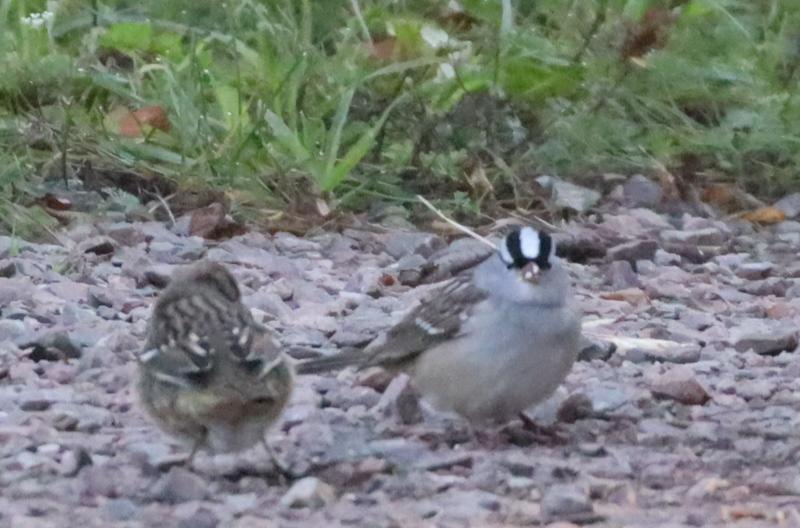
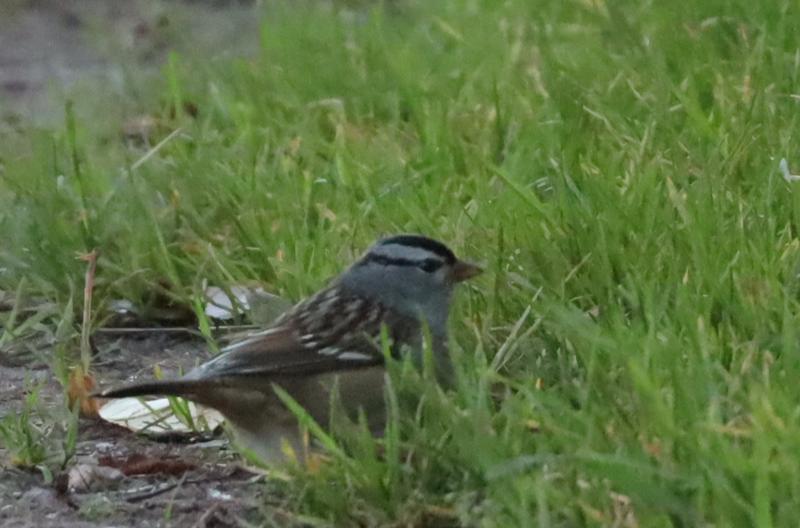
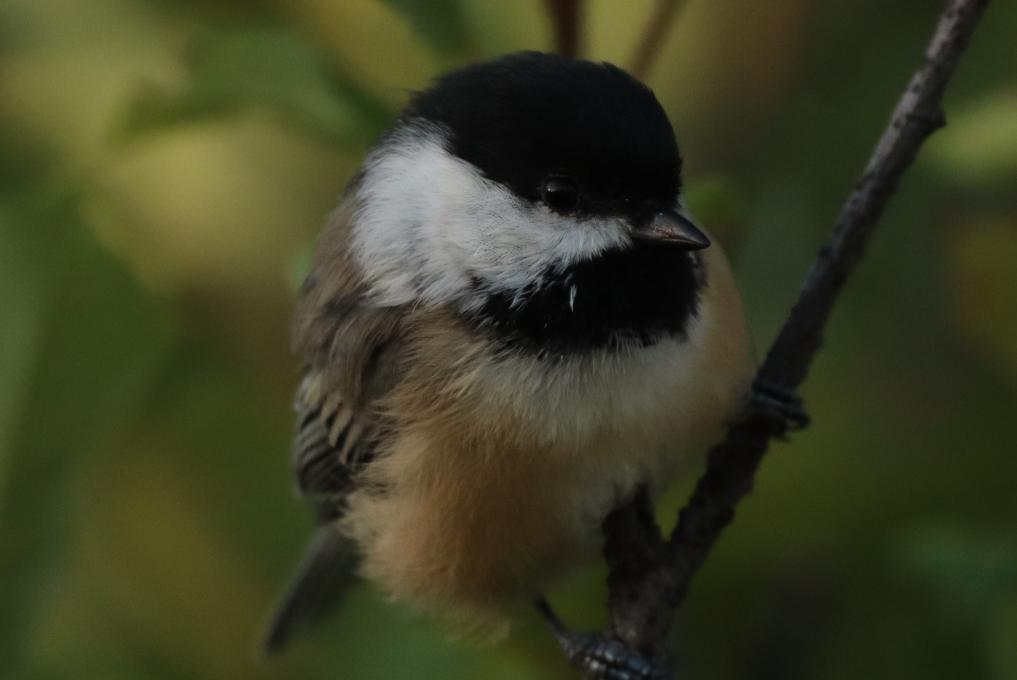 Activity 1. My two birds that I have been seeing in the backyard lately are the Black capped chickadee and the white crown sparrow. The chickadee is more of a plump bird as the sparrow looks like it is standing tall with more of a neck then the chickadee.
Activity 1. My two birds that I have been seeing in the backyard lately are the Black capped chickadee and the white crown sparrow. The chickadee is more of a plump bird as the sparrow looks like it is standing tall with more of a neck then the chickadee. 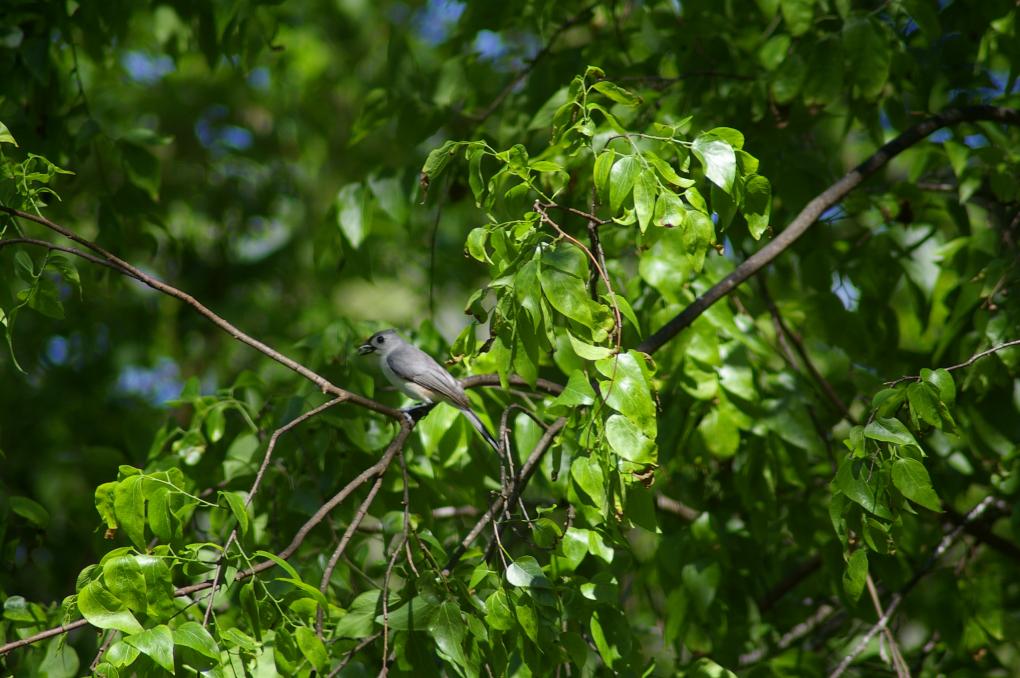


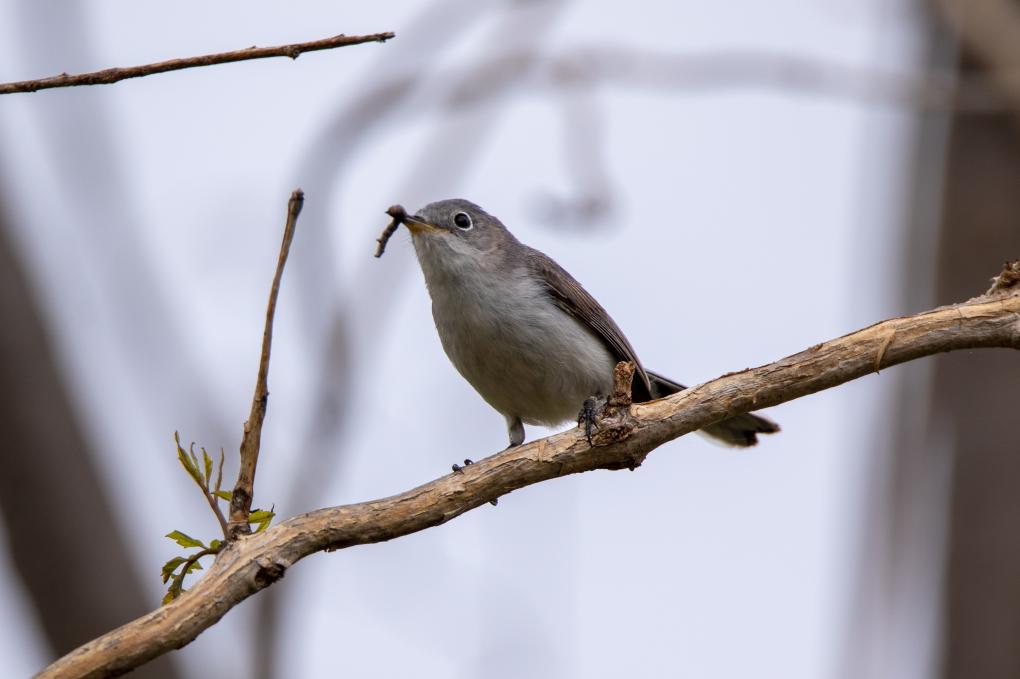 Activity 4: Right now, my favorite bird is the Pied-Billed Grebe. It's a cute bird that at first appearance may be confused for a small duck. Closer inspection shows it to have a shorter and sharper bill with a black ring (in season) vertically crossing both the upper and lower bills. The ones I've seen this year were reddish-brown and their bills were light gray. They have a long neck like a duck but a very understated pointy tail. Unlike ducks, they look very wet when returning from a dive. Unlike most ducks, they completely submerge and stay submerged for some time. They dive for fish and other aquatic animals. I have not been able to hear them make a sound yet. This is the first year I even knew they existed but I am now a very big fan.
Activity 4: Right now, my favorite bird is the Pied-Billed Grebe. It's a cute bird that at first appearance may be confused for a small duck. Closer inspection shows it to have a shorter and sharper bill with a black ring (in season) vertically crossing both the upper and lower bills. The ones I've seen this year were reddish-brown and their bills were light gray. They have a long neck like a duck but a very understated pointy tail. Unlike ducks, they look very wet when returning from a dive. Unlike most ducks, they completely submerge and stay submerged for some time. They dive for fish and other aquatic animals. I have not been able to hear them make a sound yet. This is the first year I even knew they existed but I am now a very big fan. 